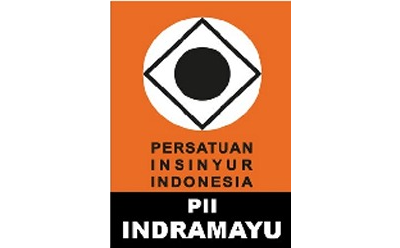PENGARUH VARIASI METERING STROKE TERHADAP CACAT PRODUK CETAKAN INJEKSI PLASTIK
Abstract
The research aims to analyze the effect of metering stroke on product quality. Metering strokes relate to product weight and mold capacity. The material used is Polyamide (Nylon) 66, using an ENGEL 50ton capacity Injection Molding machine. The research method used is an experimental method before mass pre-production with stroke metering variation as a production parameter. A normality test was used to investigate the experimental data. Shapiro-Wilk's formula on Minitab® software was used to process the data. Product defects caused by an improper metering stroke often in the injection process are short mold and flashing prints. The results show that short mold production defects occur when the metering stroke is 60 mm due to the material does not fill the full cavity. Furthermore, flashing occurs when the metering stroke is 70 mm due to out of cavity capacity. Therefore, the appropriate parameter is a 65 mm metering stroke with good quality part results.
Full Text:
PDFReferences
Bryce, D. M. (1996). Plastic injection molding: manufacturing process fundamentals. Society of Manufacturing Engineers.
Chou, S., & Chen, J. C. (2018). Six Sigma-Based Optimization of Shrinkage Accuracy in Injection Molding Processes. International Journal of Industrial and Manufacturing Engineering, 12(3), 207–212.
Firdaus, & Tjitro, S. (2002). Studi Eksperimental Pengaruh Paramater Proses Pencetakan Bahan Plastik Terhadap Cacat Penyusutan (Shrinkage) Pada Benda Cetak Pneumatics Holder. Jurnal Teknik Mesin, 4(2), 75–80. https://doi.org/10.9744/jtm.4.2.pp.75-80
Hakim, R. (2020). Desain Cetakan Plastik Multi Cavity Dengan Sistem Intercangeable Mold Insert. Jurnal Simetris, 11(1), 23–30.
Izdihar, U. F., Budiman, J., & Ananto, G. (2019). Analysis of Half Round Runner Dimensions Influence to Plastics Injection Results on Making Door Handle Using Taguchi Method. IPTEK Journal of Proceedings Series, 3, 98–101.
Jahan, S. A., Wu, T., Zhang, Y., Zhang, J., Tovar, A., & Elmounayri, H. (2017). Thermo-mechanical Design Optimization of Conformal Cooling Channels using Design of Experiments Approach. Procedia Manufacturing, 10, 898–911. https://doi.org/10.1016/j.promfg.2017.07.078
Moayyedian, M. (2018). Intelligent Optimization of Mold Design and Process Parameters in Injection Molding (Springer T). Australia: Springer.
Moayyedian, M., Abhary, K., & Marian, R. (2015). Improved Gate System for Scrap Reduction in Injection Molding Processes. Procedia Manufacturing, 2(February), 246–250. https://doi.org/10.1016/j.promfg.2015.07.043
Nuruzzaman, D. M., Kusaseh, N., Basri, S., Oumer, A. N., & Hamedon, Z. (2016). Modeling and flow analysis of pure nylon polymer for injection molding process. IOP Conference Series: Materials Science and Engineering, 114(1). https://doi.org/10.1088/1757-899X/114/1/012043
Siallagan, A. S. B., Restu, F., & Hakim, R. (2018). Experimental Study : Surface Roughness Analysis on Insert Molds with Grinding Wheel Types Variant. Proceeding of Ocean, Mechanical and Aerospace -Science and Engineering-, 5(1), 9–11.
Wahyudi, U. (2015). Pengaruh Injection Time Dan Backpressure Terhadap Cacat Injection Molding Menggunakan Material Polistyrene. Jurnal Teknik Mesin, 04(3), 81–90.
Widiastuti, H., Surbakti, S. E., Restu, F., Albana, M. H., & Ihsan. (2019). Identifikasi Cacat Produk Dan Kerusakan Mold Pada Proses. Jurnal Teknologi Dan Riset Terapan, 1(2), 76–80.
Wijayanti, I., Hakim, R., & Widodo. (2019). Studi Experimen Mula: Analisa Kekasaran Permukaan Baja ST 37 Terhadap Variasi Kuat Arus Listrik. Jurnal Teknologi Dan Riset Terapan, 1(2), 61–65.
Yalcin, B., & Cakmak, M. (2004). Superstructural hierarchy developed in coupled high shear/high thermal gradient conditions of injection molding in nylon 6 nanocomposites. Polymer, 45(8), 2691–2710.
Yanto, H., Saputra, I., & Satoto, S. W. (2018). Analisa Pengaruh Temperatur dan Tekanan Injeksi Moulding Terhadap Cacat Produk. Jurnal Integrasi, 10(1), 1–6.
Young, R. J. (1990). Handbook of plastic materials and technology (Edited by). New York: John Wiley & Sons Inc.
DOI: https://doi.org/10.31884/jtt.v6i2.262
Refbacks
- There are currently no refbacks.
Copyright (c) 2020 JTT (Jurnal Teknologi Terapan)

This work is licensed under a Creative Commons Attribution-NonCommercial-NoDerivatives 4.0 International License.
 Creative Common Attribution-ShareAlike 4.0 International (CC BY-SA 4.0)
Creative Common Attribution-ShareAlike 4.0 International (CC BY-SA 4.0)














